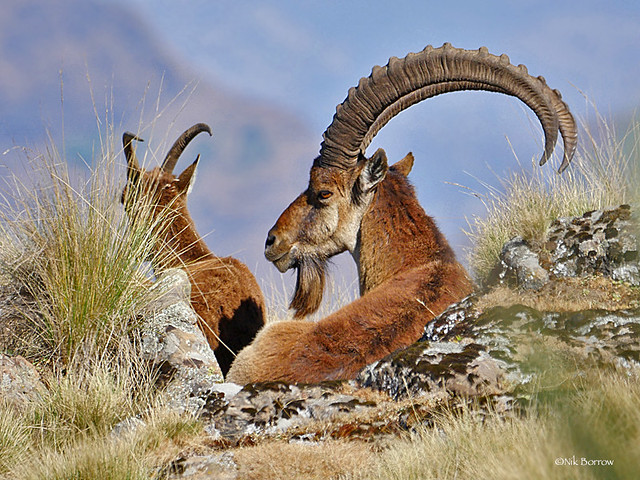The Walia Ibex (Capra walie) is a remarkable species of wild mountain goat found exclusively in the rugged and breathtaking landscapes of Ethiopia. As one of the most endangered species in the world, the Walia Ibex holds immense ecological and cultural significance. This detailed article aims to shed light on the characteristics, habitat, conservation efforts, and importance of preserving the majestic Walia Ibex.
Unique Characteristics
The Walia Ibex possesses distinct physical features that set it apart. It is a large, robust goat with impressive, backward-curving horns that can reach lengths of over a meter in males. Its reddish-brown coat, sleek build, and agile nature make it perfectly adapted to the steep cliffs and rocky terrains of the Ethiopian highlands, where it primarily resides.

Endemic Habitat
The Walia Ibex is endemic to Ethiopia and can be found in the Simien Mountains National Park, a UNESCO World Heritage Site located in the northern part of the country. This rugged and breathtaking region, characterized by dramatic escarpments, deep valleys, and jagged peaks, provides an ideal habitat for the ibex. The harsh environment and limited food sources contribute to its remarkable adaptation and resilience.
Ecological Importance
As a key species in the Ethiopian highlands, the Walia Ibex plays a vital role in maintaining the delicate ecosystem. Its grazing patterns and browsing habits help regulate vegetation growth, which, in turn, influences soil erosion, water retention, and the overall health of the ecosystem. The presence of the ibex also attracts other wildlife, creating a balanced and biodiverse environment.
Conservation Efforts
Due to its limited population and habitat, the Walia Ibex is classified as critically endangered by the International Union for Conservation of Nature (IUCN). Efforts to protect and conserve the species have been underway for several decades. These include strict conservation measures, habitat preservation, anti-poaching initiatives, and community-based conservation programs that involve local communities in safeguarding the ibex and its habitat.

Cultural Significance
The Walia Ibex holds deep cultural significance in Ethiopia. It is considered a national symbol and a source of pride, representing the country’s unique wildlife heritage. The ibex has been depicted in Ethiopian art, folklore, and traditions for centuries, symbolizing strength, agility, and resilience. Preserving the species is not only crucial for its ecological importance but also for safeguarding Ethiopia’s cultural identity.
Sustainable Tourism and Awareness
The Walia Ibex has become a focal point for eco-tourism in the Simien Mountains National Park. Responsible tourism practices allow visitors to witness the natural beauty of the ibex’s habitat while contributing to its conservation through entrance fees and community-based initiatives. Tourism also plays a vital role in raising awareness about the challenges faced by the ibex and the need for its protection.

The Walia Ibex represents a remarkable symbol of Ethiopia’s natural and cultural heritage. Its majestic presence in the rugged highlands and its critical role in the ecosystem make it a species worth preserving. Through dedicated conservation efforts, sustainable tourism practices, and raising awareness, the hope is to secure a future for the Walia Ibex, ensuring that generations to come can witness the beauty of this endangered icon in Ethiopia’s stunning mountainscapes.


Comment (0)